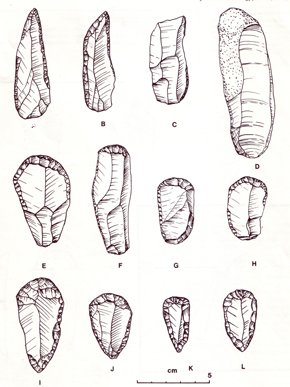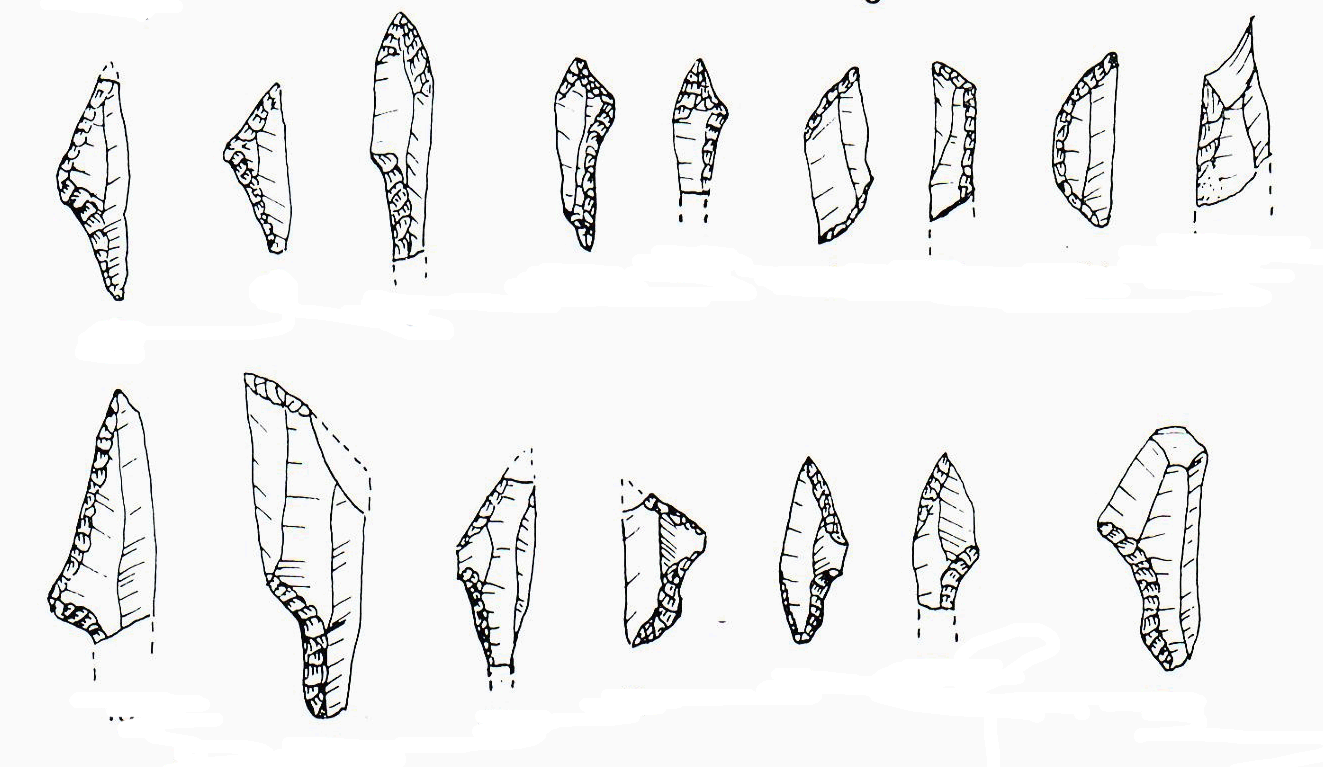Toolkit
There, as was the case at many Stone Age localities, the Paleolithic people of Kadar picked up the raw materials needed for tool making in the course of their hunting expeditions. The gravel beds of the Bosna River some 5 to 10 km away still contain an abundance of 10/15 cm long cobbles of radiolarite, a fine grained colorful chert derived from the mountains of central Bosnia.
However, after time passed in or near the river, many cobbles were gel cracked and unusable for flint knapping. As a result, the site was littered with an unusually large number of rejected pieces of shatter. When unaffected by frost, the cobbles provided a fine quality material that required little preparation in order to draw the long and thin blades they used as knives or transformed into other types of scraping and cutting tools.
Their hunting equipment included light weapons tipped with small shouldered points and micro-gravettes points that are characteristic of the 17000 to 18000 years old phase of the Late Paleolithic designated as Epigravettian.


